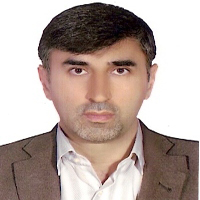Calibrating Fuzzy-Cellular Automata Model of Urban Expansion Using Genetic Algorithm
Author(s):
Article Type:
Research/Original Article (دارای رتبه معتبر)
Abstract:
Developing the scenarios for planning urban expansion is vitally important for urban planners especially because of its effects on land-use and improvement of land-use politics. However, urban expansion as a continuous and contiguous phenomenon is itself under the effect of human decisions and so uncertainty. Thus, in this research by using fuzzy logic, we tried to model the vagueness of urban expansion. Moreover, to determine the weights of fuzzy rules independent from the idea of experts, genetic algorithms was used to find the best values.
In this research by taking three criteria, namely land-value, accessibility and attractiveness, which are three pillars of sustainable development, a fuzzy-cellular automata model was developed to simulate the physical urban development in Qazvin area, Iran. After that, by setting the model parameters between years 2005 and 2010, the best results for 2010 were achieved. This model attained to the accuracy of 94.31% based on Cappa Index and 55.28% based on Figure of merit which is certainly better than previous researches on this area of study. Therefor using the calibrated model, urban development of year 2015 was simulated. For that year Cappa Index calculated as 88.73% and Figure of merit calculated equal to 39.05%. These results show the high performance of this model in the area of urban land use development. Thus combining cellular automata, fuzzy logic and genetic algorithm seems to be successful in simulating geographic phenomena.
In this research by taking three criteria, namely land-value, accessibility and attractiveness, which are three pillars of sustainable development, a fuzzy-cellular automata model was developed to simulate the physical urban development in Qazvin area, Iran. After that, by setting the model parameters between years 2005 and 2010, the best results for 2010 were achieved. This model attained to the accuracy of 94.31% based on Cappa Index and 55.28% based on Figure of merit which is certainly better than previous researches on this area of study. Therefor using the calibrated model, urban development of year 2015 was simulated. For that year Cappa Index calculated as 88.73% and Figure of merit calculated equal to 39.05%. These results show the high performance of this model in the area of urban land use development. Thus combining cellular automata, fuzzy logic and genetic algorithm seems to be successful in simulating geographic phenomena.
Keywords:
Language:
Persian
Published:
Journal of Geomatics Science and Technology, Volume:8 Issue: 1, 2018
Pages:
163 to 180
https://www.magiran.com/p1890791
سامانه نویسندگان
مقالات دیگری از این نویسنده (گان)
-
Development of an Ensemble Learning Approach for Soybean Yield Prediction using Satellite and Meteorological Data
Ali Sabzali Yameqani*, Aliasghar Alesheikh, Mostafa Majidi
Journal of Geomatics Science and Technology, -
Investigation of Spatio-Temporal Patterns of Suburban Traffic Accidents in Isfahan Province in GIS Environment
M. Rahmati, H. Aghamohammadi *, S. Behzadi, A.A. Alesheikh
Journal of Remote Sensing and Geoinformation Research,


